
Every time I read an article about the advancement of AI, I’m told that my job is no longer relevant. No joke — Microsoft released a list of the 40 jobs most threatened by AI, and writers come in at #5, proofreaders and copy markers at #19, and editors at #21. If Microsoft is to be believed, most knowledge workers’ jobs are threatened — and this includes many different occupations across the mountain bike industry, not just in media.
At the same time, Microsoft released a list of the 40 jobs that are least threatened by AI, and those generally include careers in medicine and physical labor. Unfortunately, if you’ve been following the robotics revolution, which is quietly happening in the background of the AI boom, plenty of these physical jobs — dishwashers, housekeepers, roofers, etc. — are at risk from an entirely different type of technology.
But there is one mountain bike industry job that is booming right now, and it appears to be AI-proof. Not only that, but this job has evolved from a small cottage industry into a true career path, with clear skill and salary progression.
This new career path? Trail building.
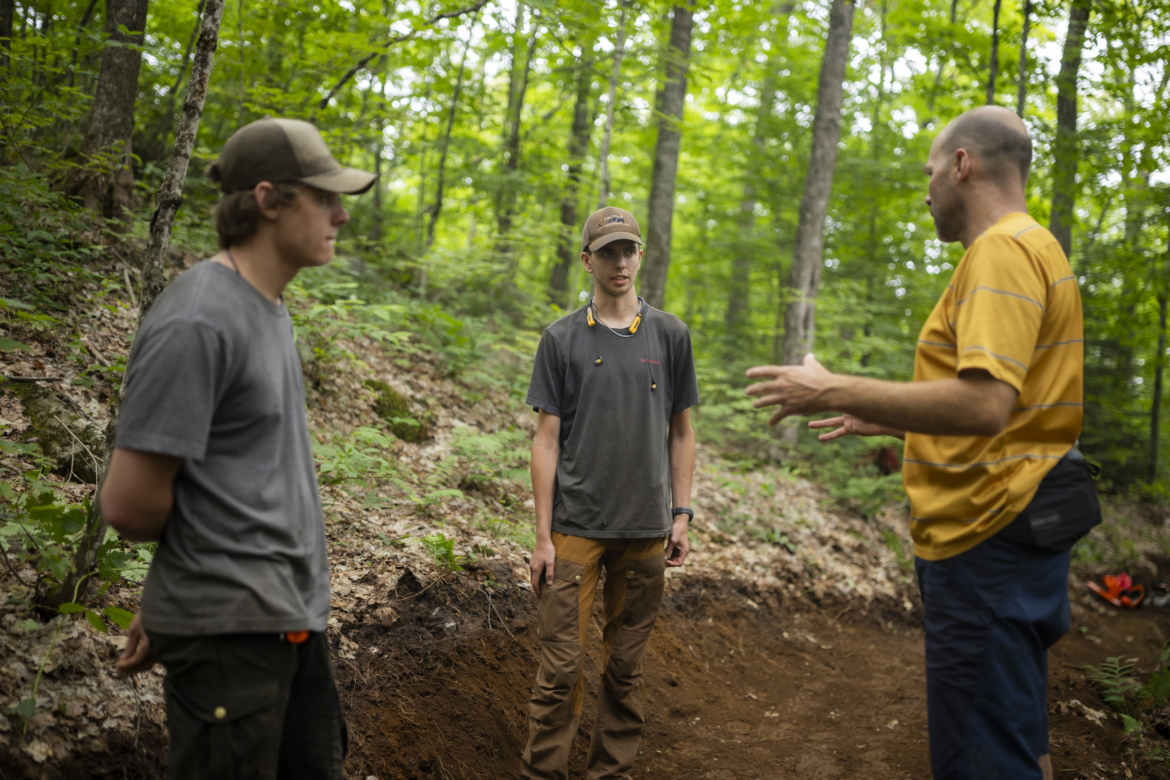
Trail building education is booming
To be considered a true career path, an occupation requires a clear educational pathway. In the past, most trail builders learned either through trial and error or from other builders they knew. Often, they spent their time building illegal trails before eventually going legit. “So many builders who are pro builders now started out as pirates,” said Joey Klein, legendary trail builder and Community Engagement Specialist for IMBA Trail Solutions, in a podcast interview with Singletracks.
With multi-million dollar contracts being inked seemingly every week, there isn’t much room for trial-and-error anymore. But thankfully, education is keeping pace with demand. As storied builders like Klein learned techniques that worked, “We passed it on. We put it in books.”
And now those books are turning into college courses.
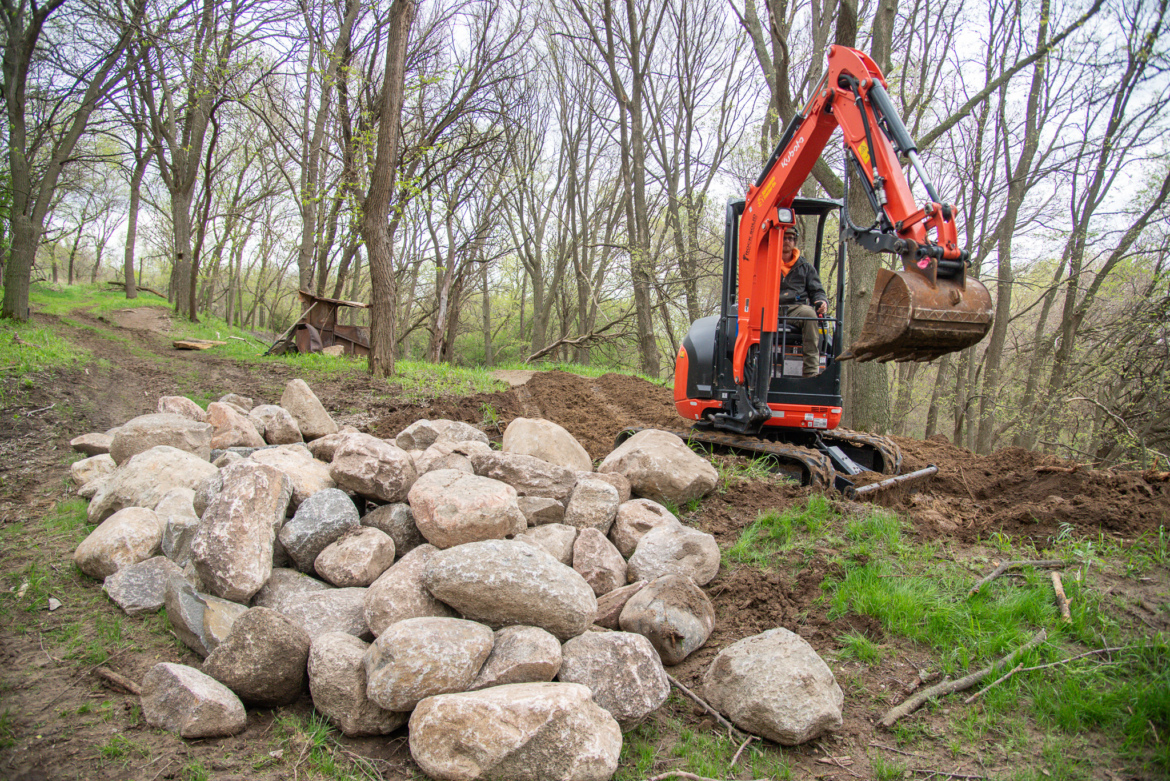
“There’s about 15 different community colleges out there that are developing some sort of certificate program for trail building,” Greg Mazu, founder of Singletrack Trails, told Singletracks back in 2024. Mazu says that these programs are “eventually going to be the way to learn how to build trails.”
In July 2024, we profiled the new Trail Technician Program being offered at the Northwest Arkansas Community College. The 12-week program provides comprehensive training in trail construction, maintenance, and management through convenient weekend classes, covering topics like trail planning and design, heavy equipment operation, welding for trails, and small engine repair. Developed in partnership with leading trail building organizations, the program provides students with two Certificates of Proficiency (Trail Technician and Trail Management) and prepares graduates to achieve NOCTI Level-1 Trail Technician Certification. The weekend format makes it accessible for working professionals looking to pivot into a trail building career.
While in the past wannabe trail builders may have had to fuck around and find out, today there’s a clear path to gaining the basic education needed to enter the profession.
Some companies are providing a clear path for career progression
Rock Solid Trail Contracting is one of the largest MTB trail building companies in the business, employing 80+ employees full-time and up to 120 during the peak of the build season. At a recent Professional Trail Builders Association (PTBA) conference, they shared a trail building career timeline as an eye-catching infographic. The graphic was intended to “showcase [that] hey, trail building is a career path that you can go into. Instead of going to a trade school or going to college, you can learn your career, and by the time you’re 22 years old, you could be a foreman, leading your own crew, building trails,” said Adam Munich, Digital Marketing Coordinator for Rock Solid.
The graphic illustrates the various steps that builders can progress through, starting at entry level hand worker and progressing to experienced hand worker, lead hand worker, transitioning operator, second operator, foreman, and eventually lead foreman. Note that the number of months or years shown next to each step isn’t the amount of time at that step, but rather, the cumulative amount of time since the employee began working with Rock Solid.

It can be easy to get started in trail building
It seems like Rock Solid is always hiring, and especially at the beginning of the 2025 build season, the company ran advertisements and pushed announcements on their own social channels specifically targeting high school NICA racers that may have just graduated and were looking for the next step. Compared to other career paths, it seems really easy to get started as a trail builder — even if you don’t have much experience.
“At the entry-level threshold, we don’t care if you have any experience,” said Munich. “All we ask is that you have a passion for what you’re doing, you show up, you’re happy, you’re friendly, you’re nice to your coworkers, and you can learn how to start getting the job done.”
“We’re looking for that person who’s passionate about what they’re doing, who wants to advance their skills and is willing to do that,” Munich continued. “If you show up to work every day [thinking,] ‘I am super stoked on bikes. I am ready to make this trail,’ you’ll have a great time. And typically, you don’t see any issues there.”
In fact, Munich said that Rock Solid prefers not to hire experienced machine operators from other companies and instead, would rather have employees who work their way up through the Rock Solid ranks.
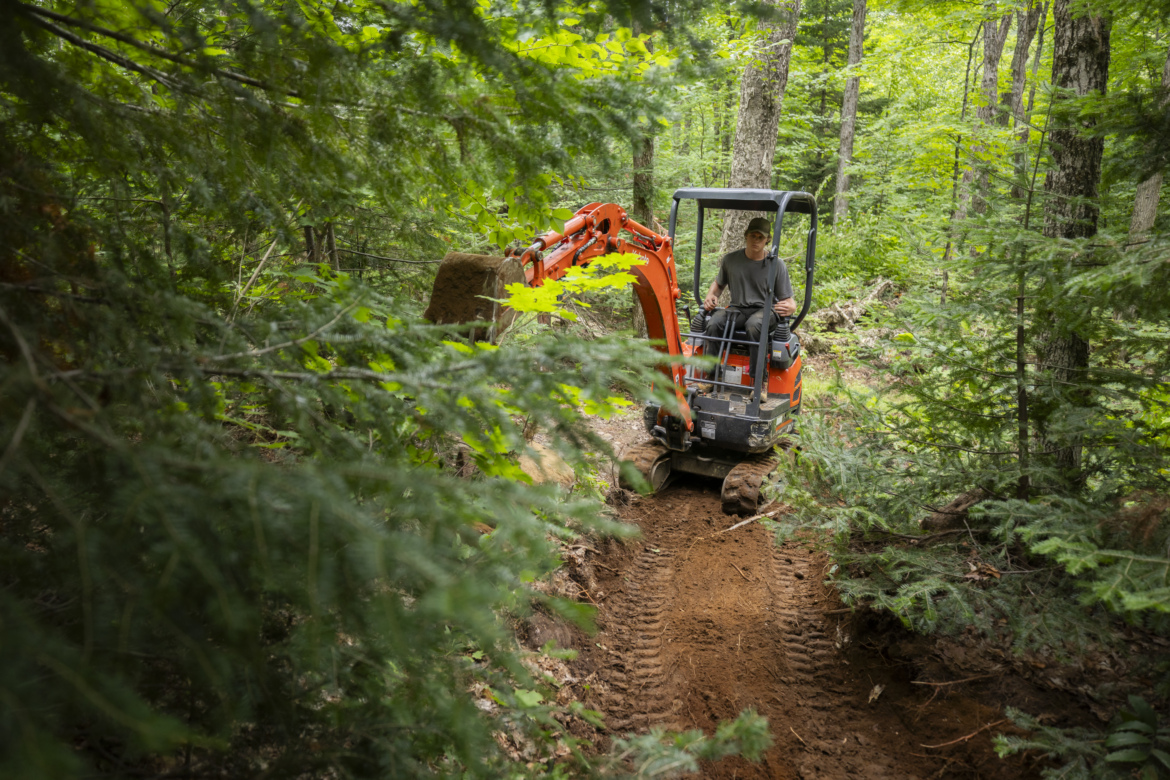
What does turnover look like?
Whenever you see companies hiring as aggressively as Rock Solid (and other trail building companies), it is often a red flag that turnover is high. “Typically, we’ll hire a lot of people in the spring, and then by the time fall and winter comes around, those hand workers that maybe didn’t join for the right reasons, typically aren’t around anymore,” said Munich.
He added that when Rock Solid is building a 100% hand-cut trail system, worker turnover is generally higher compared to machine-built trail systems due to the difficulty and physical demands of the work. “At the end of the day, swinging a McCloud for eight hours a day, it’s not very pleasant,” said Munich. “But if you really like what you’re doing, it can be very, very rewarding to the right person.”
However, for those builders who truly love the work, they can quickly progress through the entry-level steps and start transitioning into being a machine operator at 24 months, reaching the second operator position at 30 months. And once you’re there, turnover is dramatically reduced. “If you get put into a machine at that second operator position, you have that drive and that personal motivation to become a foreman, to get more autonomy in your work, and all that fun stuff,” said Munich.

How much can trail builders make? “The sky is the limit.”
Entry-level hand workers begin at a $20/hour pay rate with Rock Solid, progressing consistently to $30/hour when they reach the second operator position — meaning they’re operating machinery, such as a mini excavator.
“Then for foreman, the sky is really the limit,” said Munich.
He explained that many foremen take the initiative to increase the profit of a particular job by investing in assets such as their own truck and trailer, their own hand tools, etc. Some will even own their own skid steers or other machinery. Essentially, by owning this machinery, the foreman will reduce the cost of the entire project (since they won’t have to rent the truck and/or machinery), thereby increasing the profit margin. On the flip side, others will use a truck and trailer provided by Rock Solid.
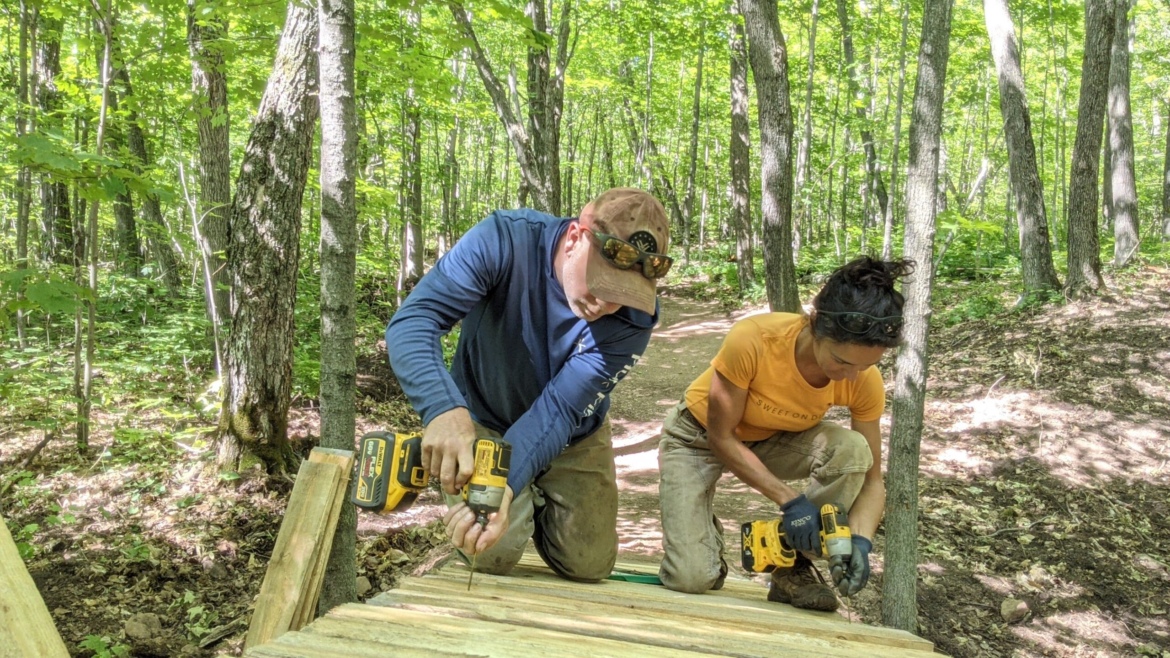
The logical next step: becoming an independent contractor
If you’re working for a company like Rock Solid, you’re still likely to hit a salary ceiling, despite Munich’s claims. This leads many long-time builders to take the logical next step: starting their own trail building company.
By becoming an entrepreneur, it’s possible to set your own salary and schedule and maintain as much autonomy as you’d like. That said, just because a builder decides to start their own LLC doesn’t mean they necessarily need to bid on big projects in order to make it. Instead, many small outfits or independent operators choose to subcontract with the bigger outfits.
In contrast to how Rock Solid operators, Progressive Trail Design (PTD) chooses to subcontract much of its work out to smaller companies. While PTD does still have its own crew members, the company truly specializes in project design and management. After securing a big contract, PTD often subcontracts the work out to smaller builders. For example, many different trail crews were involved in the construction of Durango Mesa Park’s demonstration project, even though PTD was the primary contractor on the project.
Many other trail building companies, including IMBA Trail Solutions, will use this subcontractor model, especially if there’s a nearby local builder with extensive expertise. In cases like this, subbing out some or all of the work to a local company can save money by reducing travel expenses.

Despite the hard labor, trail building can be a long-term career
Munich acknowledged that the hard physical labor and constant travel can be demanding. But even if you don’t want to strike out on your own and start your own company, companies like Rock Solid still offer the potential of turning trail building into a long-term career.
Munich specifically pointed to one longtime employee, Nils. Nils Hemple started as a hand worker with Rock Solid back in 2014. Since that time, he has worked his way up to the position of lead foreman and, over the past 11 years, has built innumerable world-class mountain bike trails across the country.
Or take Joey Klein. Klein was recently inducted into the Mountain Bike Hall of Fame for his contributions to trail building and design over the last 30+ years. Klein is now the longest-tenured IMBA employee, and he helped launch the world-renowned trail building arm of the company, IMBA Trail Solutions, in 2002. Today, he continues to work with Trail Solutions to plan and design trails as a Community Engagement Specialist.
AI might very well be coming for my job as a writer, although the inauspicious rollout of GPT-5 indicates I have at least a couple of years left before I’m deemed completely irrelevant. But if you’re searching for a mountain bike job that’s truly AI-proof, take a good, hard look at trail building. With ample educational opportunities, a clear path for career progression, and promising salary prospects, demand for this AI-proof occupation doesn’t show any signs of slowing down.












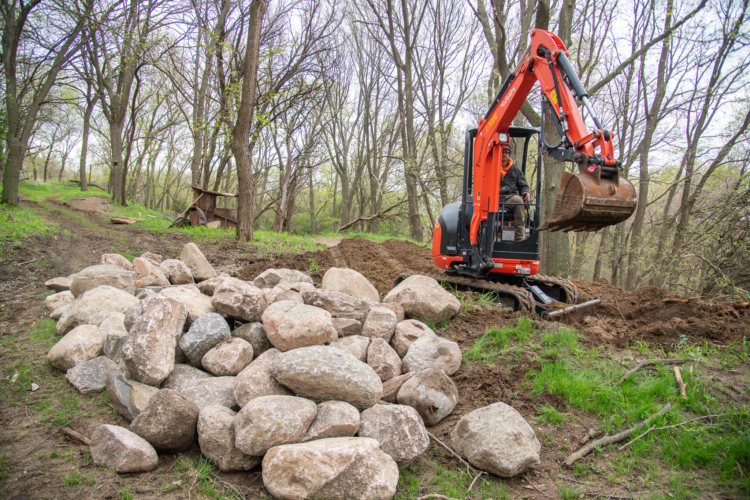
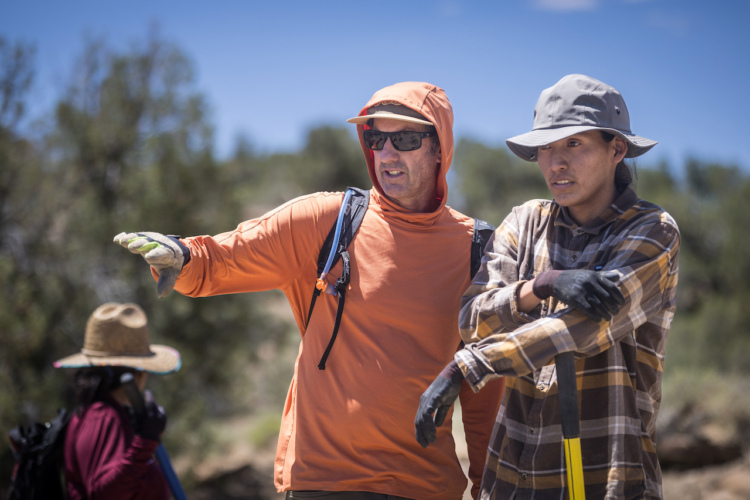


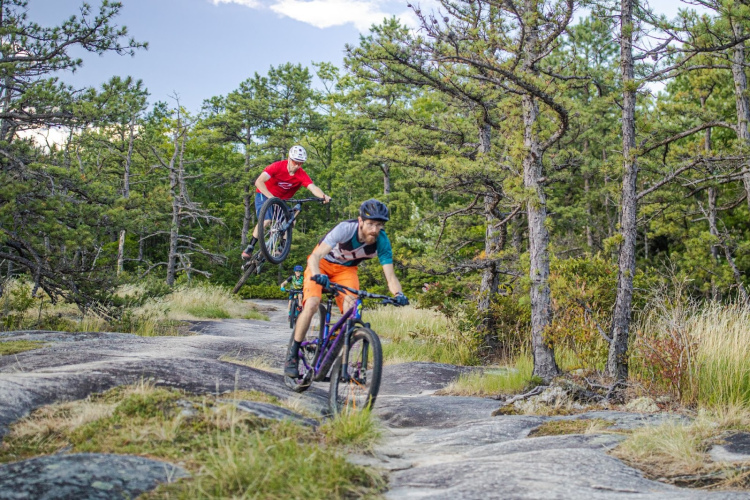
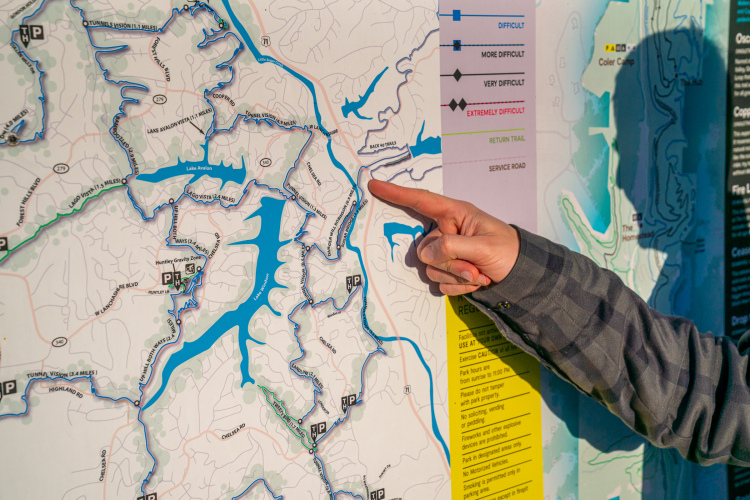



0 Comments